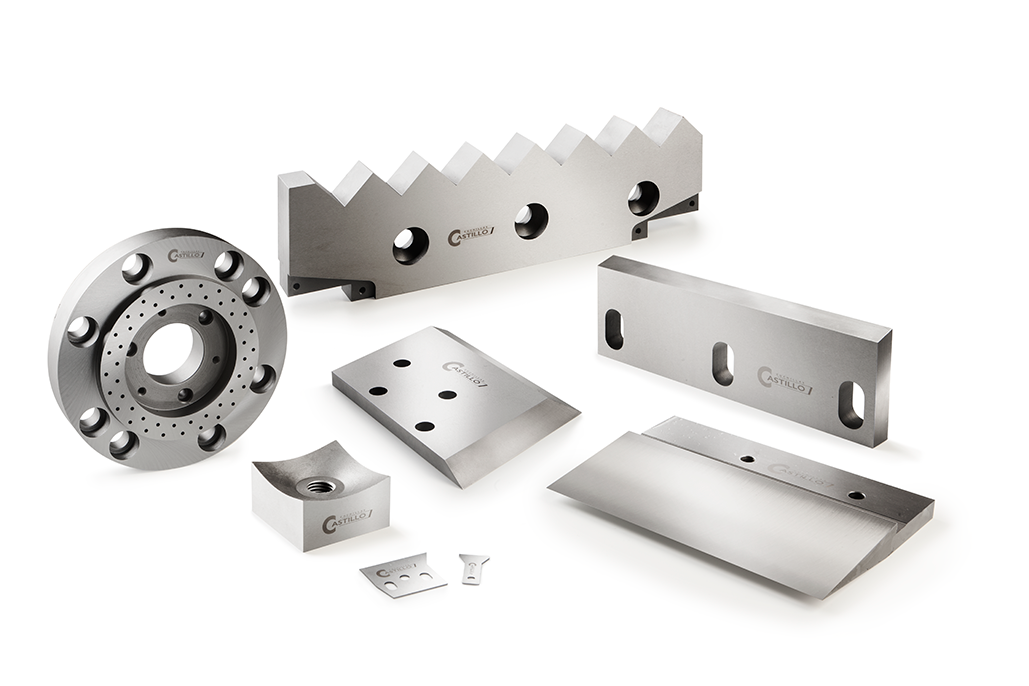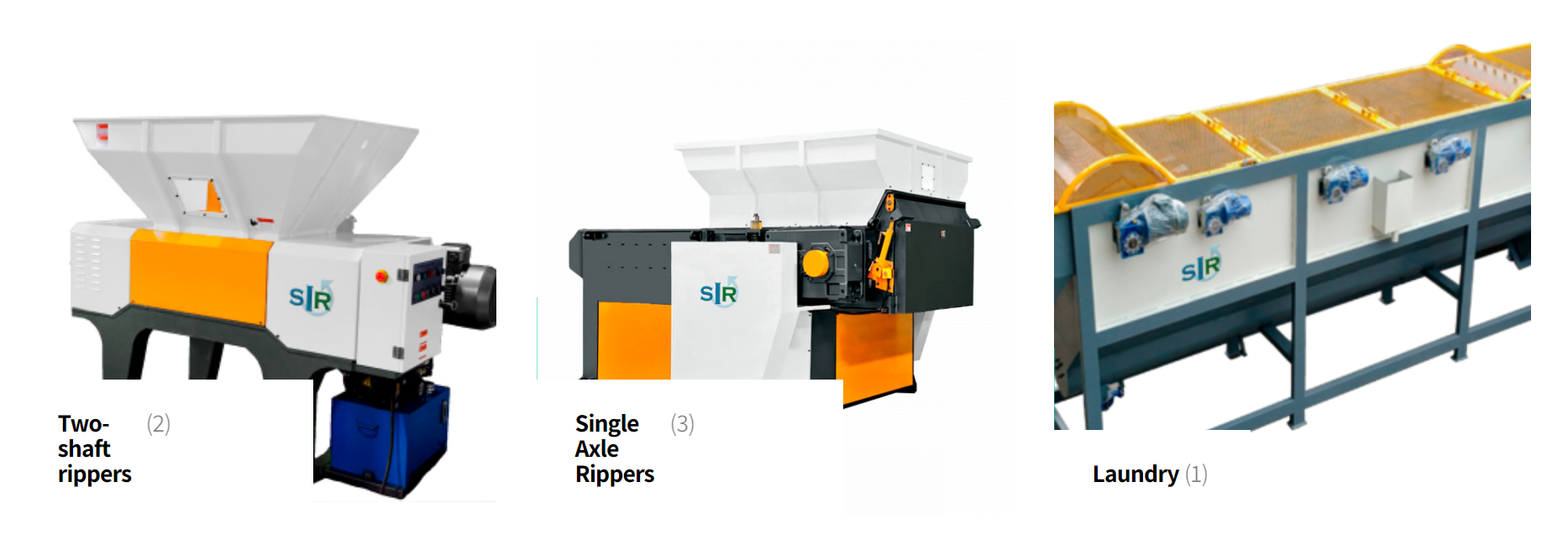Plastic recycling is an essential practice in the fight against pollution and the preservation of the environment. As the production of plastic packaging and other plastic materials continues to grow globally, it becomes increasingly crucial to implement effective methods to recycle and reuse these materials.
This article explores in detail the processes involved in the creation of recycled plastic and the objectives sought with these practices. From the collection and classification of plastic waste to its transformation into new products, we will understand how each phase of plastic recycling contributes to a more sustainable future. We will delve into the operation of specialized recycling machinery and the importance of industrial blades in optimizing the efficiency and quality of the process within the circular economy.
How Plastic is Recycled and Its Objectives
Plastic recycling involves a series of steps designed to convert plastic waste into high-quality reusable materials. This process not only helps reduce the amount of waste in landfills but also decreases the need to produce new plastics, thereby conserving natural resources and energy.
Phases of Plastic Recycling
- Collection and Classification of Plastic Waste The first phase of plastic recycling begins with the collection of plastic waste from various sources, such as homes, businesses, and industries. This waste is transported to recycling plants where it is classified according to the type of plastic, as different types of plastic require different recycling processes.
- Cleaning and Shredding Once classified, the plastics go through a cleaning process to remove any impurities or contaminants. Subsequently, they are shredded into small fragments or flakes using specialized machinery equipped with high-precision industrial blades. This stage is crucial for preparing the material for the subsequent phases.
- Melting and Molding The clean and shredded plastic fragments are melted and molded into pellets or granules using extruders. This process allows recycled plastic to be reused in the manufacturing of new products, thus closing the recycling loop.
- Manufacturing New Products Recycled plastic pellets are used as raw materials to manufacture a wide range of products, from packaging and bottles to industrial components and construction materials.
Objective: Reducing Plastic to Help the Environment
The main objective of plastic recycling is to reduce the amount of waste in the environment. By recycling plastics, these materials are prevented from ending up in landfills or oceans, where they can cause significant harm to marine and terrestrial ecosystems. Additionally, recycling helps conserve natural resources and reduce greenhouse gas emissions associated with the production of new plastics.
The use of recycled plastic in the manufacturing of new products also promotes the circular economy, where materials are kept in use for as long as possible and waste generation is minimized. This sustainable approach not only benefits the environment but can also generate significant economic savings for businesses and society in general.
Essential Types of Plastic Recycling Machines
Plastic recycling is a complex process that requires various specialized machines to convert plastic waste into high-quality reusable materials. From extruders to washing lines and pelletizers, each type of machinery plays a crucial role at different stages of recycling.
Types of Plastic Recycling Machines
- Plastic Extruders Plastic extruders melt plastic fragments into a continuous form that can be used for producing new products. These machines are essential for transforming post-consumer plastics into valuable materials.
- Shredders and Granulators Shredders break down bulky plastics into smaller fragments or granules, facilitating further processing. Granulators provide additional size reduction, producing uniform plastic particles ideal for the next recycling phase.
- Plastic Washing Lines These lines are crucial for cleaning plastic waste before recycling, removing contaminants, and improving the quality of the recycled material. Washing lines can include specialized equipment for different types of plastics, such as rigid and films.
- Pelletizers Pelletizers convert melted plastic fragments into small pellets. This stage is critical, where industrial blades play a vital role in cutting the molten plastic into uniform and high-quality pellets.
- Other Recycling Equipment Besides the main recycling machines, other equipment is essential to optimize the process:
- Dryers: Remove moisture from plastics before melting or extrusion, improving the quality of the recycled material and reducing energy consumption.
- Separators: Classify plastics based on specific properties like density, size, shape, and optical characteristics, ensuring efficient separation of different types of plastics.
- Melt Filters: Remove contaminants and impurities from molten plastic, ensuring the quality and consistency of the recycled pellets.
- Conveyors: Automate the feeding process in recycling lines, efficiently connecting the different stages of the process.
The Role of Industrial Blades
Industrial blades play an essential role in the plastic recycling process, as they are responsible for cutting, shredding, and molding plastic materials during various recycling stages. The efficiency and quality of recycling depend significantly on the precision and durability of these blades. Particularly during the shredding and pelletizing phases, the blades must be extremely sharp and durable to handle different types of plastics and ensure uniform processing of the material.
Types of Blades for Plastic Recycling
- Rotary Blades (Rotor Blades): These blades are located on the shredder’s rotor and are primarily responsible for cutting and shredding the plastic material. They typically have a blade or conical shape and are fixed on the rotor’s exterior, allowing for efficient and continuous plastic cutting.
- Fixed Blades: Fixed blades are generally located on the blade disk or the machine’s housing and work together with the rotary blades to cut and shred plastic materials into smaller particles. The arrangement and shape of these blades significantly affect the cutting efficiency.
- V-Shaped Blades: These blades are used to cut plastic materials into elongated particles and are commonly found in specific types of shredders, such as V-shaped shredders. This design allows for more precise and uniform cutting.
- Disc Blades: Disc blades are generally located beneath the rotary blades and are used to further grind the cut plastic particles into finer powder or granules. They are essential for additional size reduction.
- Angled Blades: Angled blades have inclined edges that allow for more efficient cutting and separation of plastic materials. This design helps reduce energy consumption and cutting pressure, improving process efficiency.
- Squeezer Blades: These blades are located between the rotary and fixed blades and are used to squeeze plastic materials into smaller particles or powder, ensuring additional size reduction.
- Special-Shaped Blades: Special-shaped blades can be designed and manufactured to meet specific cutting and shredding requirements, such as double-sided or double-headed blades. These blades are adapted for particular applications and can improve recycling efficiency in specific situations.
Using different types of blades in plastic recycling ensures that materials are processed efficiently and effectively, optimizing the final product’s quality and contributing to the recycling process’s sustainability.



